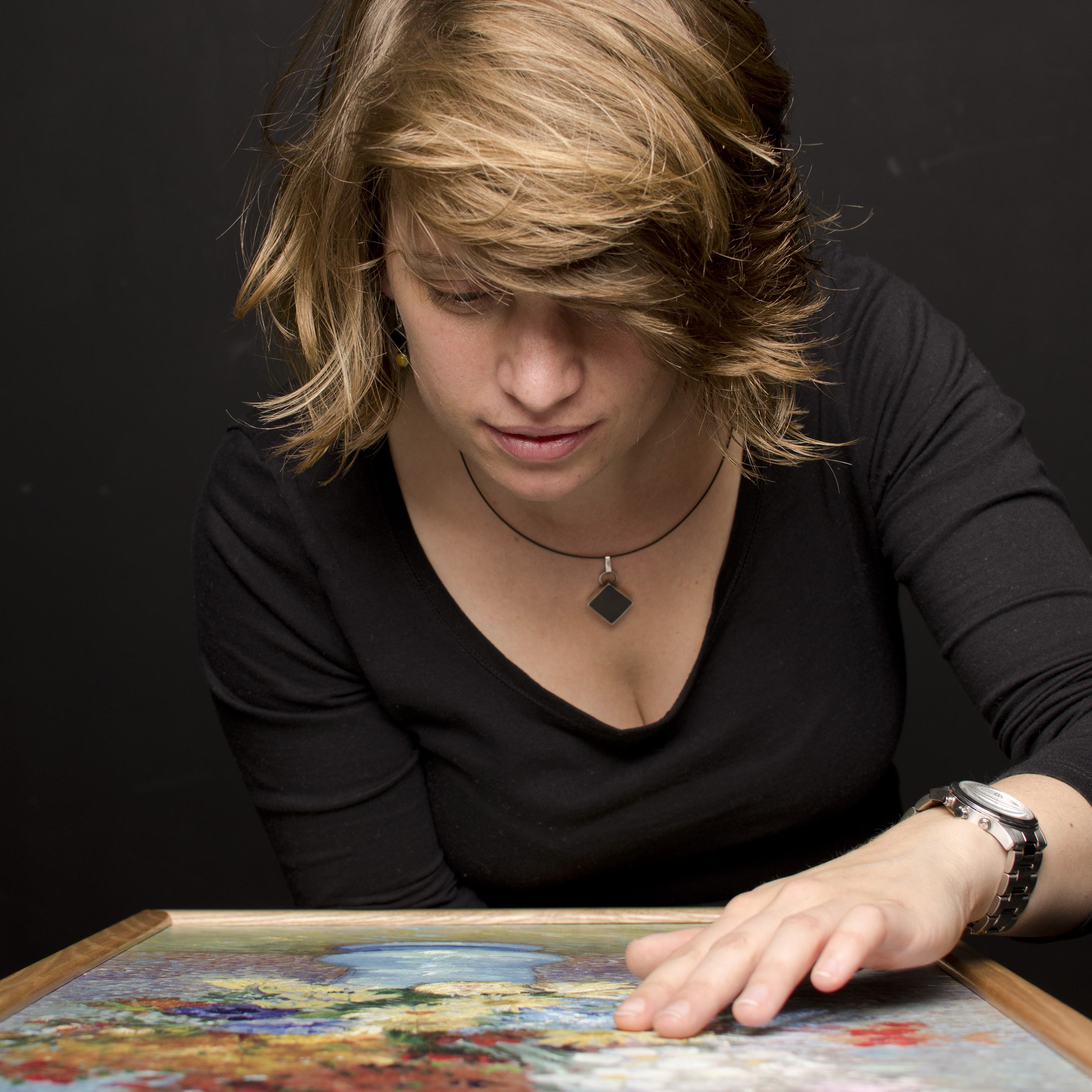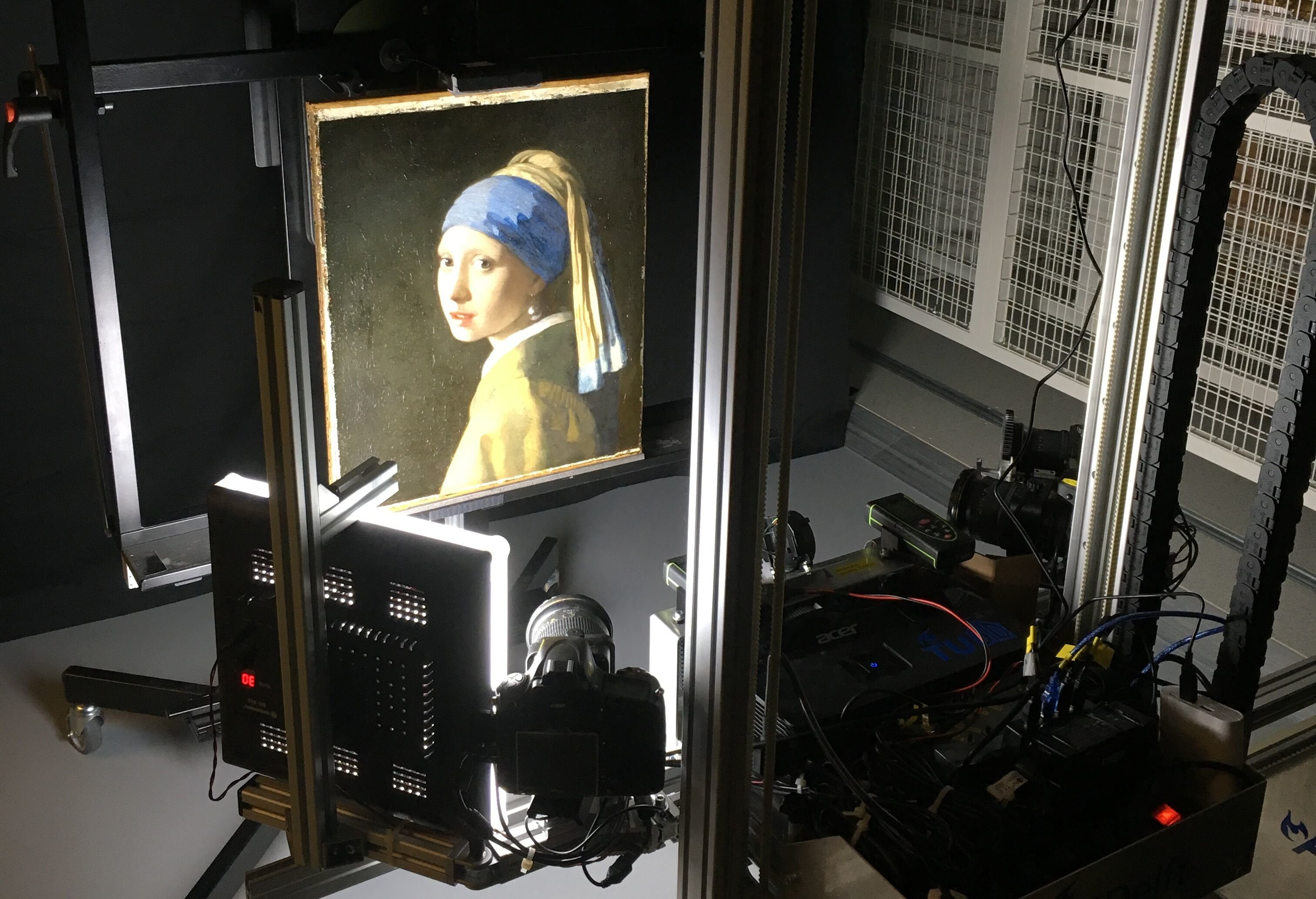Seeing, touching and documenting Dutch Master paintings
A reproduction of a painting on screen or as a poster often looks like the painting, but at the same time doesn’t come close to what the original work really looks like. Painters like Rembrandt and Vermeer very deliberately painted with variations in colour, height and transparency to make their depictions look even more lifelike.
When standing in front of a painting in real life, you discover that a painting is actually a three-dimensional ‘landscape’ of paint, with all kinds of variations in height, gloss and transparency. Researcher Willemijn Elkhuizen has developed an integrated approach that makes it possible to reproduce the complete look and feel of a painting, using 3D scanning, digital imaging and 3D printing. She will be awarded a PhD at TU Delft on Friday 4 October.
Same as the original
Elkhuizen’s approach encompasses the reproduction of colour and typography, and focuses specifically on the reproduction of gloss variations of a painting’s surface. Her chief aim was to use digital imaging and digital manufacturing to create an appearance identical to the original. “We conducted five case studies, with different world-famous paintings, including works by Vincent van Gogh, Rembrandt van Rijn and Johannes Vermeer”, says Elkhuizen.
Touching is allowed, maybe even compulsory
Various applications have been explored for the reproductions, including the potential for making reconstructions. These reproductions and reconstructions have already featured in various exhibitions, including Rembrandt? The Case of Saul and David at the Mauritshuis (2015). The reproductions have also attracted interest beyond the museum. Visitors at the 2015 Lowlands festival were able to touch a Rembrandt with their very own hands: https://newscientist.nl/nieuws/bevoel-een-rembrandt/. The reproductions give children, the visually impaired and others an opportunity to experience and learn about art in a new way: by touching the artworks. This makes art ‘more democratic’, without harming the original.
3D scan of Girl with a Pearl Earring
As part of the research project The Girl in the Spotlight, an initiative of the Mauritshuis, two 3D scans at different resolutions were made of Johannes Vermeer's Girl with a Pearl Earring. These scans were part of a case study comparing three 3D scanning techniques and examining their suitability for measuring and visualising the three-dimensional structure of a painting’s surface. “We have now made a 3D scan of the complete painting Girl with a Pearl Earring at the highest resolution ever; this will form the benchmark for further research developments.”
Closer to the original
The ability to measure intricate surface details to create reproductions has also opened up another potential applications: documenting and monitoring paintings for conservation purposes, reconstructing missing sections or to demonstrate what the painting must have looked like originally. More generally, Elkhuizen's work has brought about an improved understanding of the visual quality that can be obtained with 3D scanning and printing techniques, which could also prove to be beneficial to designers in other fields.
This research was funded by Océ Technologies B.V. It was conducted in partnership with the Mauritshuis, Rijksmuseum and Kröller-Müller Museum.
The next big challenge
As part of the restoration research project Operation Nightwatch, initiated by the Rijksmuseum, the 3D scanning technique will also be used to scan the Rembrandt van Rijn’s Nightwatch. ‘We are planning to capture the variations in height in a very detailed way’, says Elkhuizen. This can be used by researchers to further build upon the research on the documentation and monitoring of paintings, in the context of a restauration.
Exhibition
Willemijn Elkhuizen's PhD conferral ceremony on 4 October will be accompanied by an exhibition in which the reproductions she made during her research are shown. This exhibition will take place from 11.30-18.00 in the foyer of the TU Delft Aula.
Prof. Jo Geraedts’ (Elkhuizen’s promotor) valedictory address will also take place on the same day, and in the afternoon the exposition will be combined with other work from Geraedts’ group.

More information
- Thesis defence Willemijn Elkhuizen
- Farewell speech Jo Geraedts
- Homepage Willemijn Elkhuizen
- <link io onderzoek research-labs foundational-labs>Research page – 3D Fine Art Reproduction
- Interview BNR Techniektour (2019, Dutch)
- Lecture Universiteit van Nederland (Dutch)


